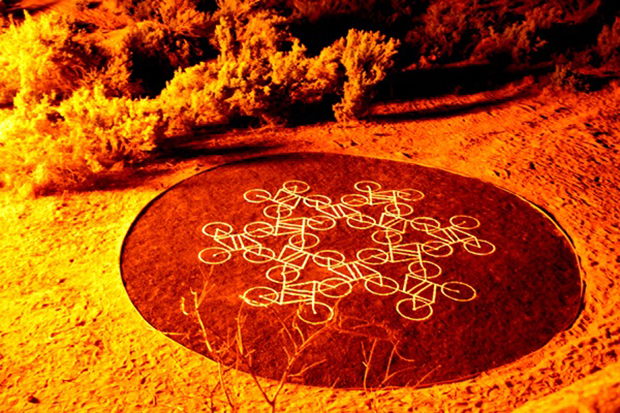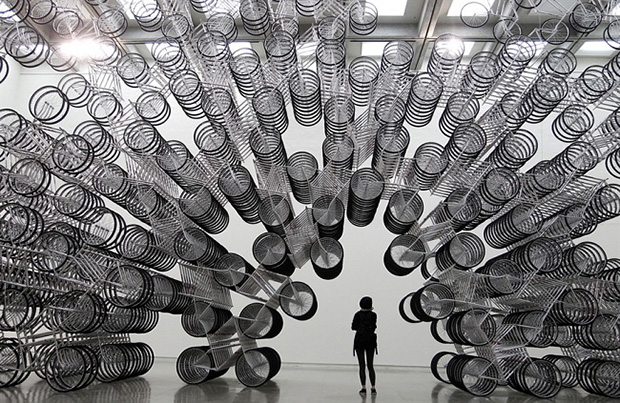
Ai Weiwei's Native American installation
Chinese artist responds to New Mexico commission with a work recalling his own exile in a similar landscape
Shihezi, a modest settlement beside the Mongolian border, might be 7,000 miles from the wilds of Cayote Canyon, New Mexico, yet the landscapes were similar enough for one of Shihezi’s most famous former residents to collaborate on a site-specific project in this remote US state park.
The Chinese artist and dissident Ai Weiwei was exiled to Shihezi as a child, after his father, the poet Ai Qing, fell out with the ruling Communist Party. The years spent on the borders of Chinese society came to mind when the curators of TIME, a New Mexican site-specific art project, approached Ai to ask whether he would collaborate.
TIME, or Temporary Installations Made for the Environment, seeks to bring Navajo artists into dialogue with the contemporary art world. Approaching Ai might have seemed like a long shot, but on closer inspection, the similarities between Ai’s time on the borderlands and the history of Cayote Canyon are remarkable; the New Mexico canyon was the site of the Long Walk, a 19th century forced deportation of the Navajo people, not unlike the kinds of measures the Cultural Revolution visited on certain sections of Chinese society.
“What they have in common is kind of tragic: The Navajos and the Long Walk, and Ai Weiwei and his family and the Cultural Revolution and being interned,” said Chuck Zimmer, deputy director for New Mexico Arts. “It’s a strong cultural connection that they’re building the piece off of.”
Ai is working with the Navajo artist Bert Benally on a series of works called The Pull of the Moon. Benally tends to produce sound and site-specific works, which use contemporary practices to engage with his people’s history.
Ai, meanwhile, has contributed a land art piece, sprinkling Chinese porcelain onto the earth in the outline of the artist’s well-known bicycle sculpture Forever. The artist chose porcelain partly because the material is perhaps “the earliest high-quality form of human expression,” the artist explained. “People have worked with ceramic processes since the Stone Age; throughout our history, people have had a great need to express themselves through this special material.”

Taken together, the works look like an agile way to examine both ancient traditions and contemporary considerations. Art lovers unable to make the trek out to the canyon this month will be relieved to learn that a 3-D digital rendering of works will be screened in a new purpose-built dome at the Museum of Contemporary Native Arts in Santa Fe, New Mexico, bringing a timely update to TIME’s practices. Find out more here. For a richer understanding of Ai’s all-important beginnings and early career buy our book, the first comprehensive monograph on this important artist. The volume includes an interview by curator Hans Ulrich Obrist and some beautiful writings by the artist's father Ai Qing. For more on site-specific art in the American landscape buy our book, Art & Place: Site-specific Art of the Americas. You can take a look at an introduction from its editor here.